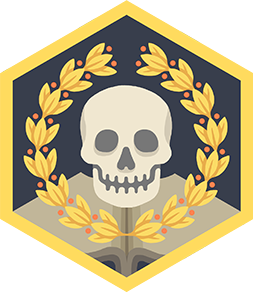Record oral history
Interview a family member to record their oral history using a phone or recorder, prepare questions, listen carefully, and save the audio file.



Step-by-step guide to record an oral history
History for Kids
Step 1
Pick one family member you want to interview.
Step 2
Ask that person if they would like to be interviewed and agree on a day and time.
Step 3
Choose a quiet comfortable place where you will not be interrupted.
Step 4
Write 8 to 10 open-ended questions in your notebook about their childhood family work and favorite memories.
Step 5
Practice asking your questions out loud two times to feel comfortable with them.
Step 6
Make sure the recorder or phone you will use has enough battery and storage.
Step 7
Do a 10-second test recording and play it back to check the sound is clear.
Step 8
Start the recorder when your interview is ready to begin.
Step 9
Say your name the interviewee’s name and today’s date clearly into the recorder.
Step 10
Ask your prepared questions one at a time and wait for full answers before moving on.
Step 11
Listen carefully and write one or two short notes in your notebook when you hear interesting details.
Step 12
Say “End of interview” and stop the recorder when you finish.
Step 13
Save the audio file with a clear filename like InterviewName_Date.
Step 14
Copy the saved audio file to a safe place such as a computer or cloud storage with adult help.
Step 15
Share your finished interview on DIY.org.
Final steps
You're almost there! Complete all the steps, bring your creation to life, post it, and conquer the challenge!


Help!?
1) What can we use instead of a dedicated recorder if we don’t have one at home?
If you don't have a dedicated recorder or phone, use a tablet or laptop with a voice‑memo app and save the file to a USB drive or email it to an adult instead of cloud storage.
2) What should we do if the interview recording sounds bad during the 10‑second test?
If the 10‑second test recording is quiet or noisy, charge or clear space on your recorder or phone, move closer to the interviewee in the quiet comfortable place, and repeat the test until playback is clear.
3) How can we change the activity for younger or older kids?
For younger children, write 4–5 simple open‑ended questions and have an adult help schedule and handle the recorder and copying steps, while older kids can write 8–10 deeper questions, practice the full interview twice, and transcribe or edit the audio before sharing on DIY.org.
4) How can we extend or personalize the finished interview after saving it with a clear filename?
To extend the project, add scanned family photos or short captions, note timestamps in your notebook when you hear interesting details, and edit the saved audio into themed chapters before uploading to DIY.org.
Watch videos on how to record an oral history
11. Language Development: What Do Children Say? (audio only)
Facts about oral history and interviewing
⏳ Oral history captures tone, pauses, and emotion, giving listeners a richer sense of the past than text alone.
💾 Backing up audio files in two places (like a phone and cloud storage) helps protect precious memories for years.
🎤 Many libraries and museums collect oral histories so voices become part of the official record.
📱 Modern smartphones can record interviews with surprisingly good quality—making field recording easy for kids.
🧓 Older family members often remember everyday details—recipes, nicknames, neighborhood stories—that aren't written down anywhere.
How do you record an oral history interview with a family member?
What materials do I need to record a family oral history?
What ages is recording oral history suitable for?
What are the benefits of recording family oral histories?


One subscription, many ways to play and learn.
Only $6.99 after trial. No credit card required



